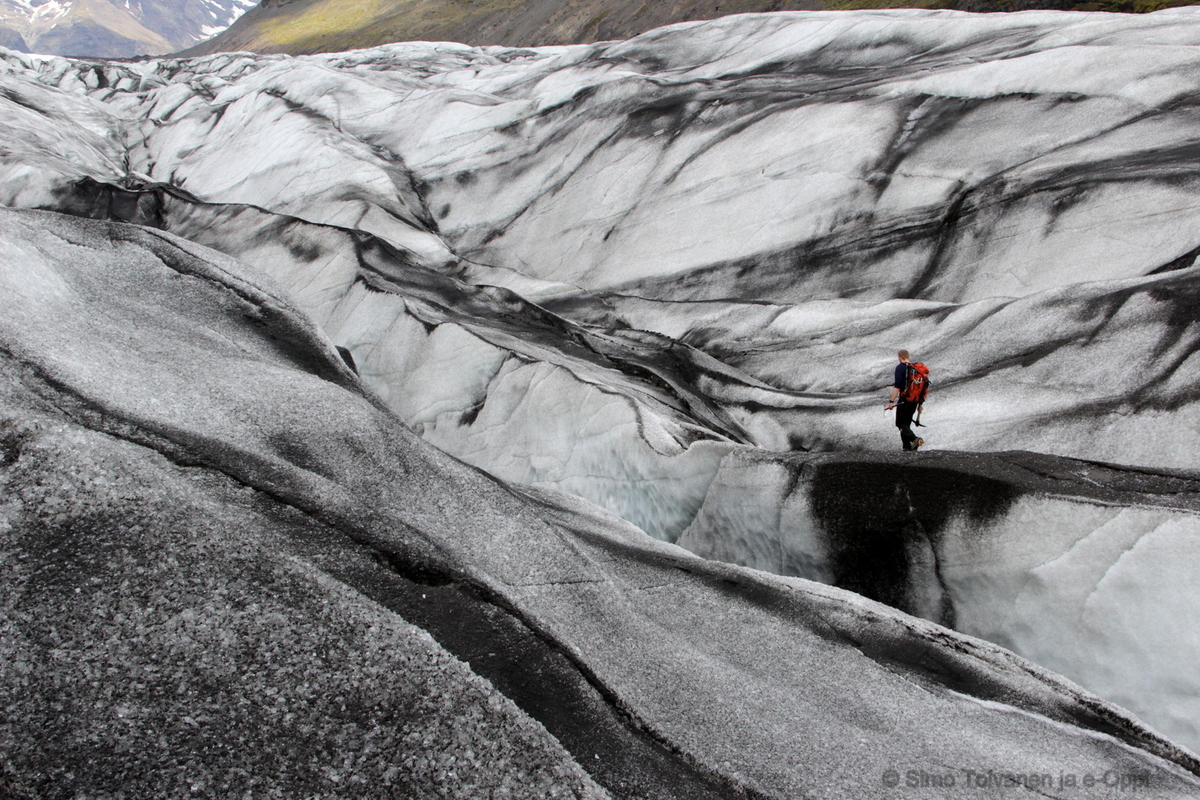3.2 The rise and fall of the last ice age
An ice age occurs when the temperature of the planet falls over time. When this happens, glaciers near the planet's poles and mountain ranges begin to grow in size, since they do not melt fast enough during the summer. Ice ages are separated from each other by long, warm periods. However, shorter warm periods can also occur within ice ages.

The last Ice Age, or the period of Quarternary glaciation, began approximately 115 000 years ago and was at its peak approximately 25 000 years ago. The ice advancing from the Scandes was connected to the ice advancing from the Ural Mountains, leaving a continental glacier that was approximately three kilometers thick and covered all of Fennoscandia and Baltia, stretching as far as Northern Germany.
During this ice age, Finland was at times completely free of ice, despite the fact that the continental glaciers began to retreat from Southwestern Finland only approximately 13 000 years ago. There have been suggestions that even giant mammoths roamed the Finnish landscape during one of these iceless periods 30 000 – 40 000 years ago. Compared to the rate at which the continental glacier advanced across Northern Europe, its retreat from Northern Europe took place significantly faster. This meant that the whole of Finland was freed from the continental glacier for good over a period of 3 000 years.
What caused the planet's climate to grow colder? Earth's climate can change depending on various factors, and these changes can take place on different time spans. The changes in the planet's temperature that took place over hundreds and tens of millions of years were probably caused by plate tectonics, which resulted in the formation of mountain ranges and shifts in ocean currents. This changed the climatic conditions of polar regions significantly.
Ice ages are also thought to be partly the result of changes in the planet's route and angle of orbit. Although these changes do not always have drastic effects on the amount of heat radiation received by the planet as a whole, they can have drastic effects near the Earth's polar regions. During the period of Quarternary glaciation, the planet's average temperature dropped by 6–8 degrees Celsius. In polar regions, the change in temperature was more drastic, as the temperature dropped by approximately 20 degrees Celsius.
In geological terms, the last Ice Age has not actually even finished yet. In fact, the period we find ourselves today is one of the exceptionally warm periods inside the glaciation period. This means that over long periods of time, all the formations and geographical features we associate with the Ice Age might in time be molded once again by glacial movement.